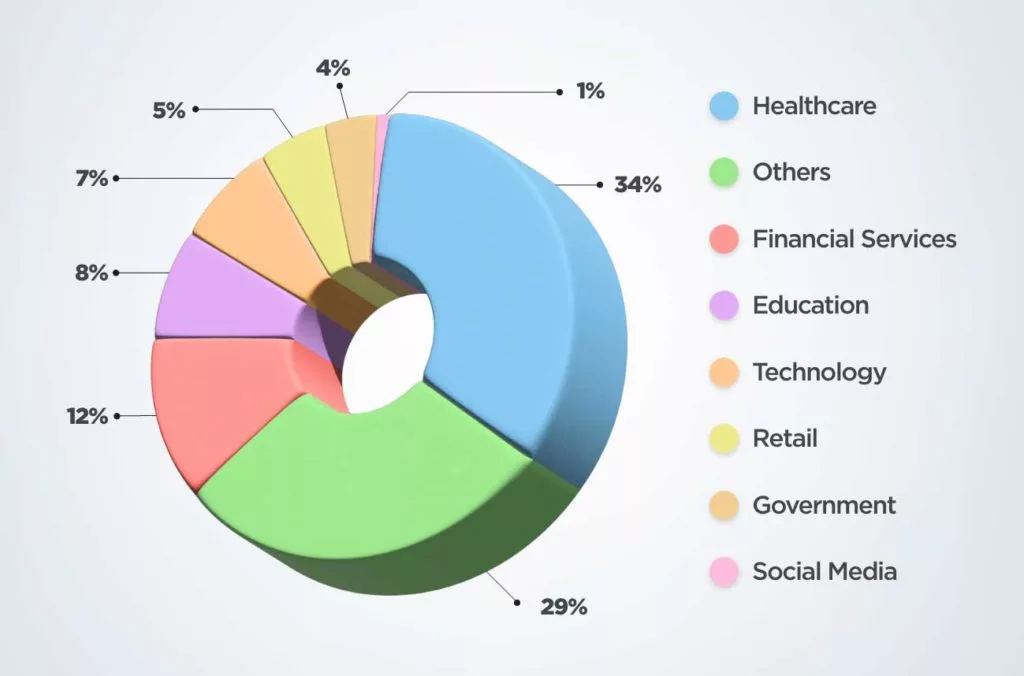Taking a close look at the importance of protecting healthcare data on the cloud, the technology that makes it possible, and real examples of large-scale cloud migration success.
Digital transformation within the healthcare industry has revolutionized how care providers and professionals can access, process and analyze the immense quantities of data contained in electronic health and medical records (EHRs and EMRs). This healthcare data is amongst the most sensitive and highly confidential information being accessed and processed on a daily basis. Not only does it contain private medical records, but it also contains personal information that could lead to a major incident if leaked – full name, home address, contact number, email, insurance details, and even bank details – a potential cyber criminal’s dream.
Coupled with the fact that medical records need to be stored for such a long period, it is no wonder, then, that such stringent security legislation exists. The minimum length of time for retaining medical records varies between countries, ranging from three to eight years for adults, and 15 to 30 years for minors. More than ever before, as increasing numbers of healthcare organizations leverage cloud services, the number one priority has to be data security and compliance.
Learn how SourceFuse can help migrate your healthcare data securely to the cloud.
Healthcare Data and Cloud Security
Protecting data from unauthorized access and data corruption is key to avoiding the inconvenience and upheaval of lost data, financial or even criminal penalties, loss of reputation and patient trust, and associated costs involved with data recovery. Regulatory standards, such as HIPAA and GDPR, can help.
HIPAA has The Security Rule, which requires healthcare professionals to protect EHRs/EMRs through administrative, physical and technical safeguards, and GDPR states “appropriate technical and organizational measures” should be taken. The ‘technical’ part places great responsibility on cloud solution providers, and rightly so – this should be their area of expertise. The ability to keep pace with the up-to-date regulatory compliances, deploying the very latest in cybersecurity software, and implementing cutting-edge technology, will all support data security risk mitigation, leaving healthcare providers to concentrate on patient care.
Data Security Technology
When it comes to working in a cloud environment, the security landscape is primarily focused on concerns around infrastructure, inventory and configuration, encryption, denial-of-service risk mitigation, monitoring and logging, and penetration testing. Factoring in the need to adhere to industry regulations and policies, while managing scalability and TCO, it emphasizes the requirement for high tech, reliable and credible solutions. According to Amazon Web Services, the various cloud security services available fall within five broad categories, under which there is a wealth of proven security technology:
- Identity and access management
Ensures only authorized users or groups are granted permission to access specific services and resources. Additional layers of multi-factor authorization include management of who has access to what data, controls sharing permissions, and governs application identity. - Detection
The ability to track user activity and monitor behavior, detect data security threats, continuous monitoring of resource configurations, and maintaining a unified security and compliance center. - Data and Infrastructure Protection
Continuous monitoring and customizable ‘rules’ to initiate proactive responses. Safeguarding data from prohibited access is achieved through controlled encryption management, automated encryption key rotation, and the ability to shield cloud applications against the most recurrent targeted attack. - Incident Response
Analyzing, detecting and troubleshooting security issues, as well as the ability to track and automatically respond to data security threats. It also includes assessing data recovery competencies. - Compliance
Ensuring regulatory compliances are adhered and risks effectively managed, through automatic or on-demand reporting, and continuous monitoring and auditing.
All of that involves a lot of cloud services! However, cyber security experts exist that can ease the process by assessing your needs, and bringing together only the appropriate pieces of the jigsaw for your organization. For example, SourceFuse partnered with Trend Micro, a leader in cloud and enterprise cyber security, whose unified platform delivers central visibility for better, faster detection and response, and a powerful range of advanced threat defense techniques optimized for cloud environments. Embedding Trend Micro expertise within SourceFuse custom applications can help make the world a safer place when exchanging digital information.
Examples of Successful Large-Scale Cloud Migration for Healthcare Data
When all is said and done, integrating healthcare data in a secure platform can achieve analytical insights to enhance patient care and improve outcomes, streamline organizational processes, reduce errors, lower costs, and monitor health trends on a national or global scale. Some healthcare organizations are already benefiting from increased levels of data security, as in the following examples.
- One leading pharma organization identified many unmet needs of patients undergoing cancer treatment, their care teams and caregivers. With extensive and complex treatment paths, engagement between the patients and their care teams throughout this time is vital, which drove the development of a ground-breaking HIPAA compliant custom application. Patients and care teams are able to collaborate better and work towards improving treatment outcomes, while data privacy is 100% guaranteed. Read More.
- One of India’s largest providers of integrated world class healthcare services was looking to automatically extract and consolidate data from 1000+ e-prescriptions per day. The HIPAA and GDPR compliant custom application automated manual processes to improve efficiencies, deployed free-text recognition, delivered real-time updates, and provided cost optimization for scalability. Read More.
Learn how SourceFuse can help migrate your healthcare data securely to the cloud.
*First appeared in CXO Outlook, Oct 2021
